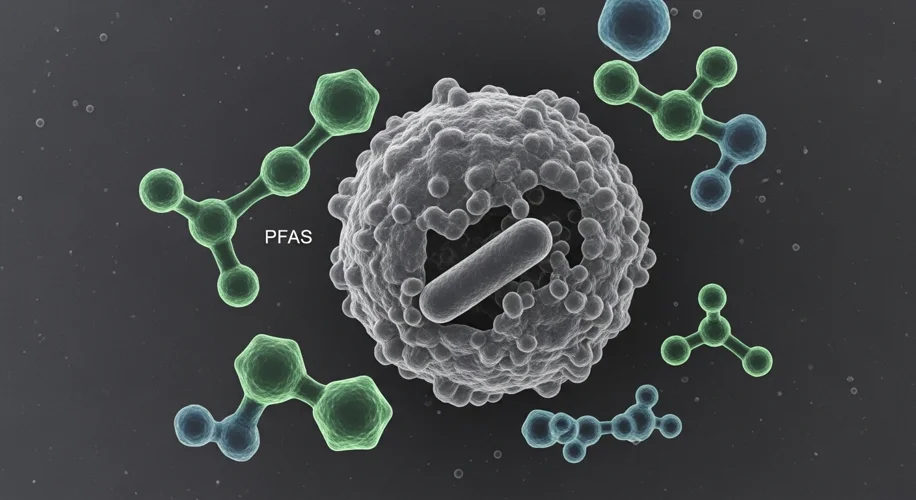As a climate scientist, I’m constantly looking at how our environment shapes our future. Today, I want to talk about something deeply personal and concerning: how the chemicals we release into the world can affect the very next generation. New research has revealed that minuscule amounts of PFAS, often called ‘forever chemicals,’ are crossing the placenta and passing through breast milk. This isn’t just a statistic; it has a direct impact on infants’ developing immune systems, potentially shaping their ability to fight diseases for life.
PFAS are a group of man-made chemicals found in countless everyday products, from non-stick cookware and food packaging to waterproof clothing and firefighting foam. Their widespread use and persistence in the environment, including our water and soil, mean that exposure is incredibly common. They’re called ‘forever chemicals’ because they don’t break down easily, accumulating in our bodies and the environment over time.
What’s particularly alarming about this new research is the pathway of exposure to the most vulnerable: our babies. The study indicates that these chemicals aren’t just a threat to adult health; they are present during the critical developmental window of pregnancy and infancy. The fact that they can cross the placenta means exposure begins even before birth. Then, they continue to be transferred through breast milk, a source we typically consider the safest and most nutritious for infants.
The implications for the immune system are significant. A baby’s immune system is a complex, developing network that learns to distinguish between friend and foe. Exposure to chemicals like PFAS during this sensitive period can disrupt this delicate process. While the exact long-term effects are still being studied, early research suggests it could alter how the immune system responds to infections and vaccines, and potentially increase the risk of autoimmune diseases or allergies later in life.
This research underscores a broader, critical point about environmental contamination. It highlights the interconnectedness of our planet’s health and human health. The chemicals we use and discard don’t just disappear; they infiltrate our ecosystems and, ultimately, our bodies. For those of us concerned with climate change and environmental sustainability, this is a stark reminder of the far-reaching consequences of our industrial choices.
So, what can we do? While systemic change is crucial, there are steps we can take as individuals to reduce our exposure and advocate for safer alternatives:
- Be mindful of product choices: Look for PFAS-free alternatives for cookware, food packaging, and personal care products.
- Reduce reliance on fast fashion: Many synthetic fabrics and waterproof treatments contain PFAS.
- Support clean water initiatives: Advocate for regulations that limit PFAS in drinking water sources.
- Stay informed and vocal: Educate yourself and others about these chemicals and support policies aimed at phasing them out.
This isn’t about creating fear, but about empowering ourselves with knowledge. By understanding the impacts of chemicals like PFAS, we can make more informed choices for our families and contribute to a healthier planet for everyone. It’s a reminder that our environmental stewardship today directly impacts the health of future generations.

